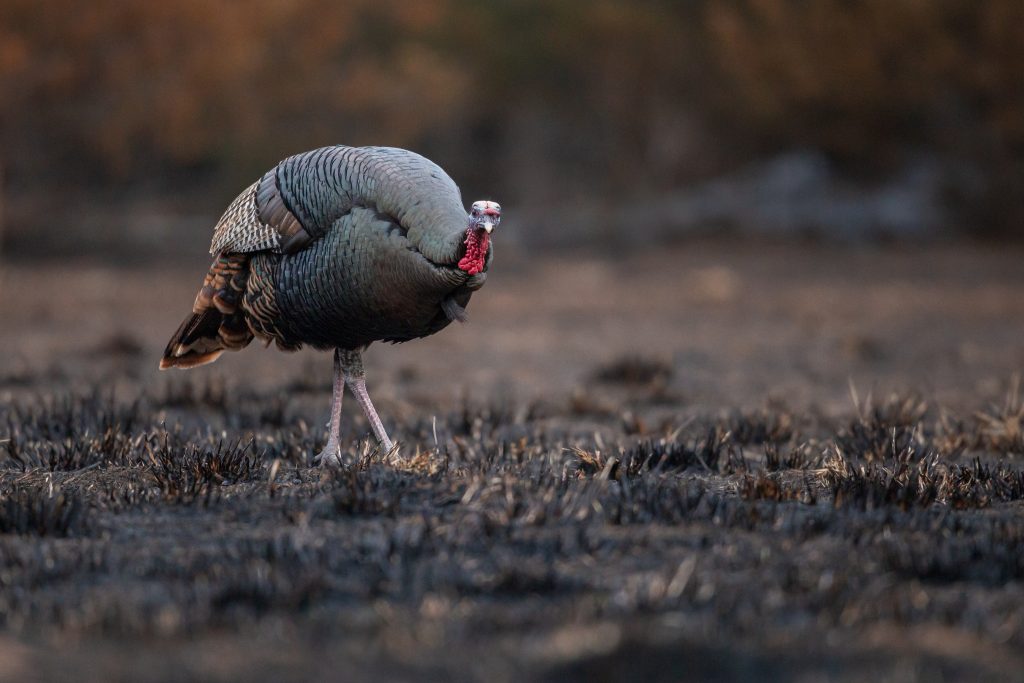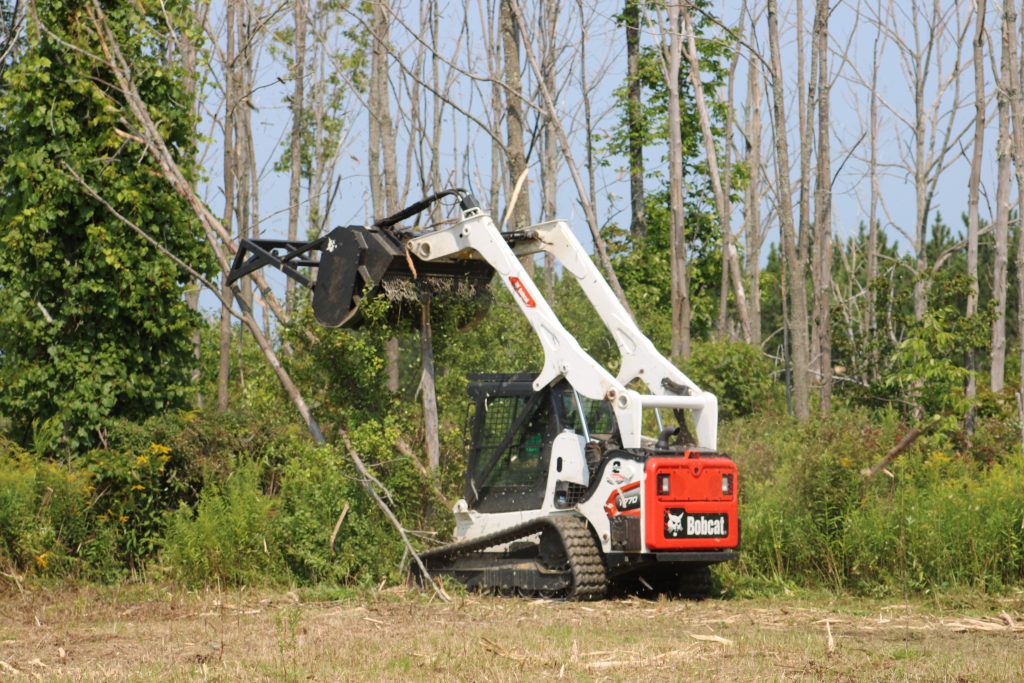Conservation Week: Habitat Diversity
Whether you manage your property for wildlife or are a wild turkey enthusiast, you've probably heard about how wild turkeys require a mosaic, or patchwork, of habitat to meet their annual cycle needs. But what exactly is a mosaic of habitat, and how can landowners create it?
For Conservation Week 2024, NWTF district biologists from across the country discuss habitat diversity and how managing for a mosaic creates a better overall habitat for wild turkeys.
A wild turkey's home range can stretch from as little as about 400 acres to almost 2,000 acres, depending on the time of the year and the availability of resources. Within this range, turkeys need to have mature trees for nightly roosting; insects, mast and vegetation for daily foraging; cover for evading predation; food plots or nearby agricultural waste also help turkeys get through the winter; and tall grassy areas that contain forbs and dense insect abundance are great for hens nesting and raising poults in the spring.
"For wild turkeys, we try to create diversity so that they have options," said Derek Alkire, NWTF district biologist for Alabama, Kentucky and Tennessee. "They require different things at different points in their life. For instance, here in the South, they spend their time exclusively in hardwood bottoms in the wintertime when they're flocked up, and then they start to spread out as spring nears. At that point, they need nesting and brood-rearing habitat, which looks a little bit different than what they needed in their fall range. So, having that diversity of habitat across the landscape ensures that there is something for the turkeys all year round to meet their life needs."

And while ecosystems may look different across the country, turkeys from coast to coast have the same annual cycle needs to survive and reproduce year after year.
Having the necessary habitat during the springtime is vital for a stable or growing wild turkey population. That is why the NWTF created its Habitat for the Hatch Initiative, a 10-year effort to put more nesting and brood-rearing habitat on the ground across the Southeast, an area — as a whole — that is experiencing a decline.
"Habitat for the Hatch is a Southeastern initiative, and its main crux is putting more brood-rearing habitat near nesting habitat," Alkire said. "One of the things we see across the Southeast is a lot of closed canopy forest, whether that's hardwoods or pine. It's just a closed canopy, which means that sunlight is not reaching the forest floor. Habitat for the Hatch is an initiative to try to open the canopy — maybe that's timber harvest, or maybe your overstory trees need cutting so you can create some gaps in there. Now all of a sudden, you've got pockets of sunlight hitting the ground, creating that diversity within the forest."
Landowners often ask, "What vegetative species should I plant to help create nesting and brooding habitat?" The answer is more nuanced than a specific species to plant.
"When I think turkey management and how to benefit wild turkeys, I think more about structure than individual species," Alkire said. "I would say you're looking at suites of species like bunch grasses. Bunch grasses offer bare ground, and that's so important because wild turkey poults are very small, and they need that space to move between those bunches of grasses and those stems, whereas some of the pasture grasses and things like that can get really thick, and it's hard for a poult to move between. So you're looking at the structure of what those plants provide at the ground level.”
For landowners looking to create quality brood-rearing habitat for turkeys, a tip is to think about throwing a softball; if you cannot throw it to a thicker area of cover, your brooding habitat is likely too far from escape cover. If you can't roll a softball on the ground through your grasses, it's probably too thick.
"There are numerous studies that have assessed the overland travel required for poults," said Ryan Boyer, NWTF district biologist for Indiana, Michigan and Ohio. "As that increases, we can see reduced survivability. So, the more we can do to support managers and develop prescriptions to ensure that turkeys have the required resources at a high abundance and quality, we can help aid in increasing things like poult survival, likely nest success and hen survival. These are all vital rates that are going to improve the breeding season parameters and numbers of wild turkeys in those areas."
While brood-rearing habitat is critical for hens recruiting poults into adulthood, fall and winter forage are also critical. Turkeys that come out of winter in good condition are more likely to have success nesting and raising a brood.
"We're considering each aspect of the annual cycle and seasonal weather impacts, too," Boyer said. "As you start to get further north, winter survival and conditions going into the spring breeding season can be pretty impactful as well. So, we're considering how we can provide those critical food sources so they can build up the required fat and energy reserves to not only survive in the winter but go into the spring in better condition."
The NWTF's new Forests and Flocks Initiative is designed to ensure wild turkeys' annual cycle needs are met in the Northeast, helping turkeys enter spring in the best condition possible, by creating habitat diversity.
"We're often working a lot on ridgetops, these really poor growing sites that may be overgrown with mountain laurel or scrub oak, and they are marginal habitat, maybe even impeding movement from one side of a ridge to the next," said Mitch Blake, NWTF district biologist for Delaware, Maryland, New Jersey, New York and Pennsylvania. "So, as part of Forests and Flocks, we're working in these sorts of marginal areas with state and federal partners to do restoration, and that looks like using a forest mastication machine, chewing up this mountain laurel, creating this open space with mast-producing vegetation and making it more conducive for wild turkey use. Right now, a lot of it is an impenetrable thicket."

Across the country and through various initiatives, the NWTF and its partners are working to create the diversity of habitat that wild turkeys need, whether that be nesting and brood-rearing habitat in the spring, young forest habitat for evading predators, or opening up areas for better mast foraging during the fall and winter. The turkey has varying needs throughout the year, and you can help.
"One of the things that you can do is look at what your neighbors are doing; work with your neighbors so that you together provide for the wild turkey,” Alkire said. "Even if you have 10 acres and it's not feasible for you to provide everything that a wild turkey needs, if you can provide one piece of that, and if you're working with your neighbors to manage wildlife at a larger scale, then working together, you can put together all of the needs that wild turkeys would need throughout the annual cycle. We, as biologists and foresters, can help landowners to work across those boundaries."
If you want to learn more about making your property diverse for wild turkeys, contact pr@nwtf.net to be put in contact with the appropriate NWTF biologist.
